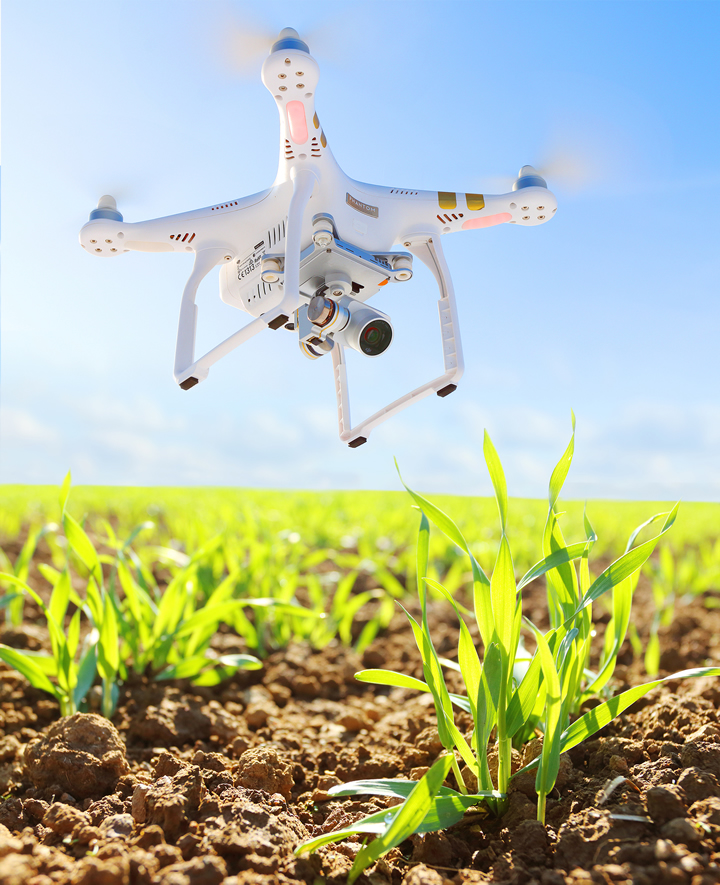3 Applications of Green Robots for Sustainability in 2022

Sustainability initiatives have seen increasing adoption year over year, with robotics as a key component of major projects. Fighting climate change and creating a more environmentally friendly world requires significant actions beyond the everyday variety. Nature is grappling with the brunt of climate change’s harmful side effects.
Scientists have begun implementing robotic tools to aid in innovative sustainability strategies. With 2021’s unprecedented surge in public interest in sustainability, 2022 will see more use and development of green robots than ever before. A few applications show particular promise.
1. Cleaning the Oceans
The United States produced 292.4 million tons of municipal waste in 2018, with the rest of the globe creating millions of tons more. Landfills alone are responsible for 17% of U.S. methane emissions, which pose a greater threat to the atmosphere than carbon dioxide (CO2) since methane has more effective heat absorption.
About 8 million tons of that trash are dumped into the ocean every year, resulting in massive islands of waste known as garbage patches. The Great Pacific Garbage Patch is twice the size of Texas and contains over 1.8 trillion pieces of refuse.
Finding a solution for managing and minimizing all this waste is imperative. It is quickly taking its toll on ocean life, which in turn damages other ecosystems, including human communities and global food supplies. A critical first step is a widespread movement for individuals to to avoid single-use plastics and reduce personal pollution.
Meanwhile, engineers are working on new robotic systems that can aid in waterway pollution cleanup efforts. In Chicago, Urban Rivers has created a robot that swims around the Chicago River collecting garbage. The Trashbot is an important component of Urban Rivers’ other sustainability efforts, such as creating floating gardens on the Chicago River and protecting local wildlife.
At MIT, researchers are developing a bot named Luigi that can remotely inspect sewage pipes. Luigi is controlled by an iPhone app and helps scientists study the bacteria and chemicals in sewer water. This research could lead to new ways of breaking down human waste or converting it into energy one day.
One robot already focused on converting waste into energy is the Row-bot, created by researchers at the University of Bristol. This bot systematically swims around collecting organic waste in waterways and turning it into energy, which researchers hope will allow it to operate autonomously. If the Row-bot’s cleaning efforts can be mass-produced, the team hopes their project will be able to reduce global clean water shortages.
2. Protecting Ecosystems
The central goal of sustainability is protecting the natural environment, from microscopic beneficial bacteria to apex predators and everyone in between. A few green robots on the rise are focused on helping protect ecosystems, either by keeping invasive species under control or observing ecosystems in a nondestructive way.
A critical component of conservation is researching and observing wildlife, especially species that are under threat of extinction. This is exactly what SlothBot is designed to do. Researchers at the Georgia Institute of Technology have created a 3D-printed robot that hangs from the treetops, slowly creeping along like a real sloth while it peacefully observes plants and wildlife. Humans and research equipment can be frightening and disruptive, but the SlothBot solves that problem by allowing conservation scientists to get the valuable data they need without disturbing any animals.
Sometimes environmental research is challenging due to the location and nature of what’s being studied. This is exactly the case with the Red Sea’s coral reefs. Coral reefs are extremely important, with benefits for wildlife, humans and businesses alike, so protecting them is a crucial sustainability and conservation initiative.
The humanoid diving robot OceanOne is designed for diving beyond the depths that humans can, enabling researchers to study the reefs deep in the Red Sea. This complex bot even has working hands and a human-like face, acting as an “avatar” for a remote pilot.
Invasive species pose a unique threat to ecosystems. They somehow migrate to an ecosystem outside its own, where it has an unfair natural advantage that allows it to destabilize wildlife. The EcoBot II is helping protect local ecosystems from invaders. This Bristol Robotics Laboratory bot roves around ingesting flies and slugs, which it then converts into biomass to use as energy. While the robot is still in its development phase, it represents an important step in the fight against invasive species.
3. Fighting Climate Change
Ultimately, the common goal of all sustainability and conservation efforts is to fight climate change, with the hope that humans can stop the planet’s temperature from rising further. A few scientists are working on robots that are specifically designed to combat this directly.
For example, several cloud-seeding robots are in development, mainly as drones. These flying bots build up and activate clouds through strategic moisture stimulation and rainfall catalysts. This technology could be monumental for combating droughts by artificially triggering rainfall. Additionally, clouds act as a heat barrier for Earth since the white color of clouds reflects sunlight back into space.
Trees play an important role in keeping the atmosphere balanced and healthy. However, reforestation is expensive and highly labor-intensive, making it challenging to plant large numbers of trees quickly. Milrem Robotics is aiming to change that using its robotic foresters. These robots use LiDAR and GPS to systematically plant new trees, automatically detecting exactly how far apart each sapling needs to be. Researchers hope the forester bots will be able to plant upward of 1 trillion trees one day.
Autonomous vehicles are slowly becoming more mainstream, alongside electric models. Self-driving EVs are on track to become the future of transportation, which could help make the entire industry more sustainable. They don’t produce the greenhouse gases that traditional versions do, and robotic self-driving cars could make personal transportation more accessible than ever before. If fewer people own vehicles one day ride robotic EVs to work, greenhouse gas emissions could drop significantly.
Robots for the Planet
Sustainability is about the sum of all the little things everyone does to help save the planet. Green robots are amplifying the power of those everyday actions, as well as major research projects that keep waterways clean and protect endangered species. When humans and robots work together, wildlife, humanity and the planet itself all stand a better chance at surviving and thriving.
Comments (0)
This post does not have any comments. Be the first to leave a comment below.
Featured Product

